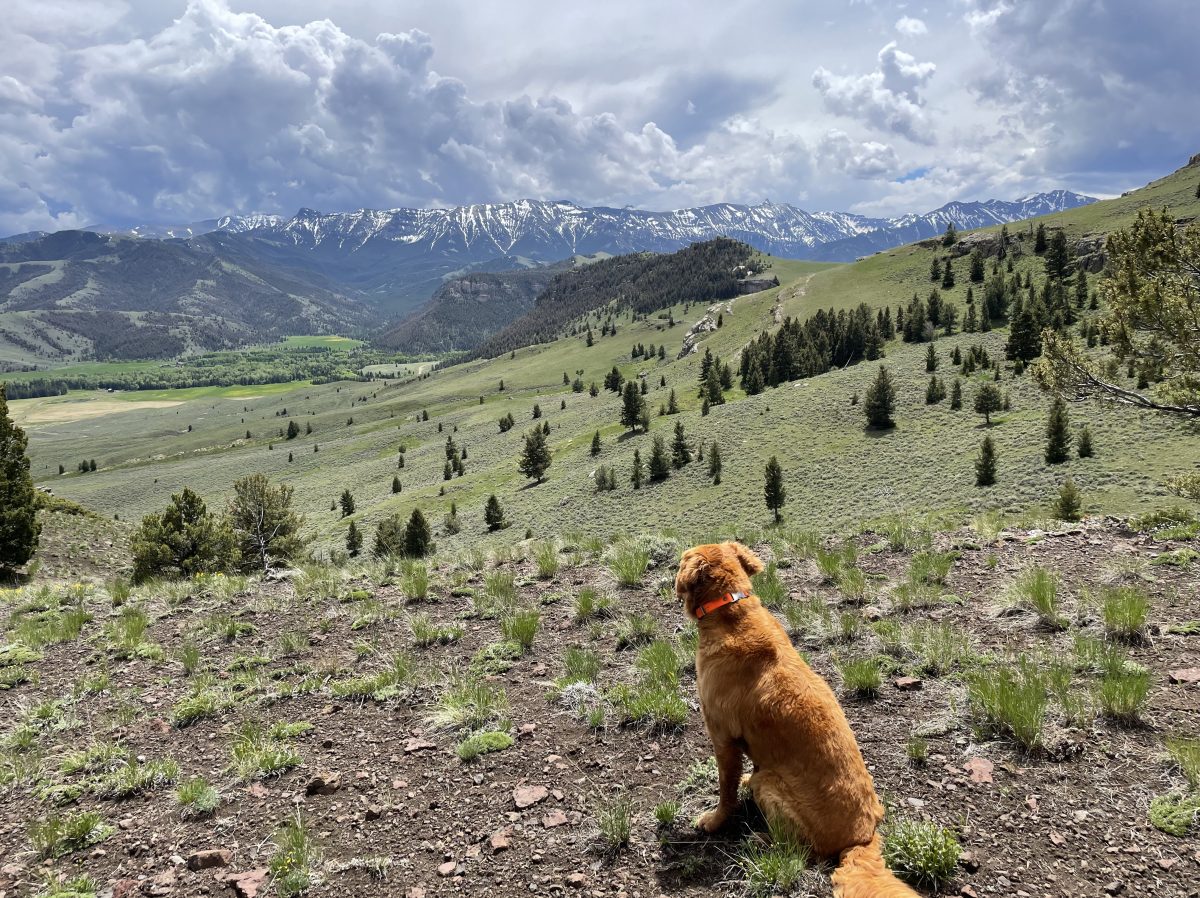I just came back from New York where I picked up a few interesting books. Two of them present similar science on our vanishing wildlife but different approaches. End of the Wild by the late Stephen M. Meyer who was a professor of Political Science at MIT, says it is just too late to save the biodiversity on this planet. It is known that in the next 100 years, more than half the planet’s species will disappear. Meyer’s says that there will still be plants and animals, but they will be the weedy species that survive more easily around humans–from dandelions to coyotes, mosquitos to corn–species that survive in human disturbed eco-systems. His is a pessimistic view.
The other book I’m reading, Rewilding the World by Caroline Fraser is a fascinating read, presenting a more hopeful view that will take work, though. Scientists concur that ecosystems, to remain intact, need three things–Cores, Corridors, and Canines (or translate top predators). For instance, a Core would be Yellowstone Park; a Corridor would be the Yellowstone to Yukon project; and the Canine would be the wolf in this case.

One of the most fascinating bits of research Fraser quotes that began this kind of thinking amongst scientists was a study done in 1990 by John Terborgh, a biologist who studied a stranded hilltop ‘island’ created by a new hydroelectric dam in Venezuela that flooded a valley. As the new lake filled, the predators fled, leaving only smaller creatures behind on the islands. I quote the book below:
“After a team studied the islands, the data painted a horrific picture. Safe from predators, howler monkeys proliferated on some islands, but they were not enjoying their freedom from fear. Normally social animals, they were living alone, attacking one another, and killing their own infants. By denuding trees, they caused surviving plants to protect themselves with toxins, so meals provoked vomiting. Many plants are capable of deploying extraordinary chemical defenses against herbivory by inducing a rapid rise in levels of toxins that can repel or kill those feeding on them. On islands with howler monkeys, the instability caused by the absence of predators and superabundance of herbivores set off a vicious chain reaction.
On other islands, predators of left-cutter ants were absent (armadillos and army ants) and the ants ran amok, carrying everything green off to their underground nests, leaving a…thicket of impenetrable throny vines, destroying all remaining life, plant and animal. Terborgh and colleagues reported that after a few years almost 75 percent of vertebrate species had been lost from the smaller islands without jaguars or pumas.”
Fraser’s book examines corridor projects around the world, successes and failures. She looks at central and south America, and large projects in Africa. Many of the African projects are of interest, not only because of the great diversity of megafauna (particularly elephants which reck havoc amongst farmlands and villages and need very large corridors) but because they are multi-national endeavors–huge corridors that cross nation boundaries. Like the Greater Yellowstone, these Peace Parks (a concept first begun with Waterton-Glacier Park) include protected cores, as well as corridors where people live.
I can’t begin to describe all the different approaches here, but certainly the corridor projects that have been the most successful involve the local communities and take into account their needs. One of the most botched plans was Paseo Pantera in central America, where good intentions became convoluted by developers getting involved and local peoples weren’t taken into account from the start. The project degraded into an “integrated conservation and development project”
Large animals need large corridors.

And there is also the ‘problem with predators’, a human problem that has been obvious in the GYE since the wolf was eliminated in the 30’s in Yellowstone, and millions of coyotes, bobcats and other predators have been routinely destroyed with tax dollars for decades due to cattle predation.
Yellowstone to Yukon is a corridor concept that has been around since 1997. Its a conservation vision to preserve our North American great animals for future generations and for the earth. Some work is being done already, like over- and underpasses for wildlife; wildlife friendly fencing, and species reintroduction. But to be successful, it will take people living within this corridor to be involved and share the same vision, to do their small part whether it be active shepherding their livestock or replacing their fences for pronghorn passage, or saying ‘no’ to intensive housing developments in corridor areas, or as small as bear-proof garbage cans. People need to realize when they live or move to these areas that they are becoming involved in wildlife corridors, which have special requirements, different than city or suburb living. And help and education needs to be given to those people, such as ranchers, affected by corridors. Solutions must be community based but with the greater vision in mind.
Fraser states ” ‘Carnivorous animals are important. We have to stop thinking of them as passengers on this earth and start thinking of them as drivers.’ Inevitably, an ecosystem robbed of its top predators begins a remorseless process of impoverishment.” If we are truly interested in saving the great animals of North America, from wolves to bison, elk and pronghorn to grizzly bears, we who live here must all become involved in the Vision of Y2Y, stop our regional bickering and look towards the wholistic future.
Fraser’s book presents a glimmer of hope for Rewilding. We, as a world culture, are fighting a strong current of species loss. It is a great fight not just for these species, but for ourselves and the future of mankind on this planet. Meyer’s vision of a world of limited weedy human-adapted species may sound livable, but boring, and missing the richness of magnificent mammals such as tigers, elephants, and crocodiles. But Fraser’s admonition of the howler monkey hell, a potential future with the absence of diversity and predators, is a world not worth living in.
